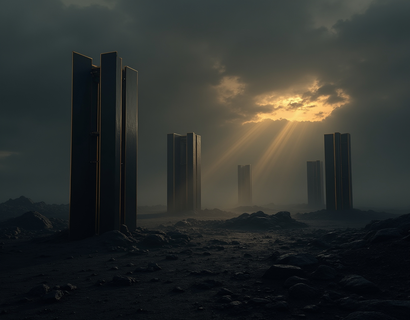Unlocking the Indus: A Comprehensive Journey Through Ancient Architecture, Culture, and Innovation
The Indus civilization, one of the oldest and most enigmatic of the ancient world, flourished around 2600 to 1900 BCE in the fertile plains of the Indus River, encompassing parts of present-day Pakistan and northwestern India. This comprehensive guide delves into the rich tapestry of the Indus civilization, exploring its remarkable achievements in architecture, culture, and technology, and examining its lasting impact on modern society. Through in-depth insights and historical analysis, we uncover the secrets of this ancient society, offering a vivid picture of a civilization that was ahead of its time.
Architectural Marvels of the Indus Civilization
The Indus civilization is renowned for its advanced urban planning and architectural innovations. Cities like Mohenjo-Daro and Harappa stand as testaments to the sophistication of Indus urban design. These cities were built with a grid system, featuring straight streets and well-planned blocks, a concept that was revolutionary for its time. The urban planners of the Indus civilization demonstrated a keen understanding of sanitation and water management, evident in the sophisticated drainage systems and public baths.
The Great Bath of Mohenjo-Daro, one of the most impressive structures, showcases the Indus people's attention to detail and their emphasis on cleanliness and ritual purity. Constructed with precise masonry, the bath was likely used for ceremonial purposes and reflects the society's advanced engineering skills. The use of standardized bricks, uniformly sized and precisely laid, is another hallmark of Indus architecture, indicating a high level of organizational and technical expertise.
Houses in Indus cities were well-built, with multiple stories and intricate drainage systems. The use of baked bricks not only provided durability but also allowed for the construction of complex structures. The discovery of well-constructed wells and water storage tanks further underscores the Indus people's ingenuity in managing water resources.
Cultural Achievements and Social Structure
The Indus civilization was a society of remarkable cultural richness, with evidence of a complex social structure and a variety of cultural practices. While the script of the Indus people remains undeciphered, archaeological findings provide valuable insights into their way of life. Seals and artifacts depict a range of activities, from trade and commerce to religious rituals and artistic expression.
One of the most intriguing aspects of Indus culture is the presence of a mother goddess figure, often depicted in pottery and seals. This suggests a matrilineal or matrifocal society, where women held significant status. The emphasis on fertility and the worship of a female deity indicates a deep connection to nature and the cycles of life.
Trade was a vital component of Indus society, with extensive networks reaching as far as Mesopotamia and the Persian Gulf. The discovery of Indus seals in these regions attests to the breadth of their trade connections. Goods such as cotton textiles, metals, and precious stones were exchanged, indicating a sophisticated economy and a high level of craftsmanship.
Technological Innovations
The Indus civilization was a hub of technological innovation, particularly in the fields of metallurgy, pottery, and agriculture. The people of the Indus were skilled metalworkers, working with copper, bronze, and tin to create tools, weapons, and decorative items. The discovery of advanced tools and jewelry suggests a high degree of technical proficiency and artistic skill.
Agriculture was the backbone of the Indus economy, with evidence of sophisticated irrigation systems that supported the cultivation of crops like wheat, barley, and cotton. The use of plows and other agricultural tools indicates a well-organized farming community. The cultivation of cotton also points to the early development of textile industries, a legacy that continues to influence modern textile production.
The Indus people also demonstrated advanced knowledge of mathematics and astronomy. The layout of their cities and the alignment of certain structures suggest an understanding of geometric principles and celestial bodies. This knowledge likely played a role in their religious practices and daily life, further enriching their cultural tapestry.
Lasting Impact on Modern Society
The influence of the Indus civilization extends far beyond its historical context, with many of its innovations and cultural practices shaping modern society. The concept of urban planning and the emphasis on sanitation and public health are principles that continue to guide contemporary city design and public health policies. The Indus people's advanced water management techniques, such as the use of wells and drainage systems, remain relevant in regions facing water scarcity.
The artistic and cultural legacy of the Indus civilization is also evident in modern art and design. The stylized forms and motifs found in Indus artifacts have inspired artists and designers, contributing to a global appreciation of this ancient culture. The mother goddess figure, in particular, has been reinterpreted in various forms, symbolizing femininity and strength in contemporary art and literature.
In the realm of archaeology and historical research, the Indus civilization continues to be a source of fascination and study. The ongoing efforts to decipher the Indus script and understand the society's social structure and religious beliefs contribute to a broader understanding of human history and cultural development. The Indus civilization's achievements serve as a reminder of the ingenuity and creativity of our ancestors, inspiring future generations to build upon these foundations.
In conclusion, the Indus civilization was a remarkable society that made significant contributions to architecture, culture, and technology. Its legacy lives on in the modern world, influencing various aspects of our lives and serving as a testament to the enduring human spirit. By exploring the Indus civilization, we gain valuable insights into the roots of human civilization and the universal values that transcend time and culture.











































